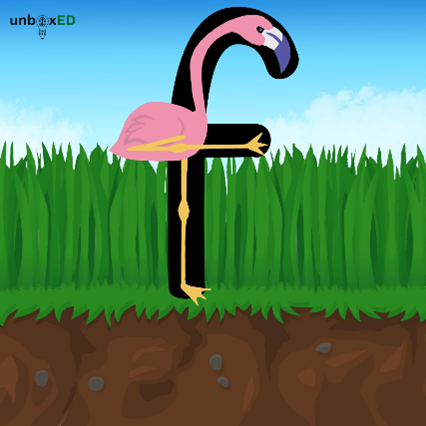How does the NCF affect you in the classroom?
- Things Education

- Apr 28, 2023
- 4 min read
...and some examples of this.

Hello and welcome to the 36th edition of our fortnightly newsletter, Things in Education. What does policy change in education mean for you as an educator, a school leader or a content creator? Today, we try to partially answer this in the context foundational learning.
“Content is king (or queen)!” This is a common phrase in the world of digital marketing and branding. What it means is that no matter how good your marketing or promotional efforts are, if your content is not engaging or informative, people will not stick around to consume it.
We believe that the same principle applies to the world of education. No matter how high-end the technology or how extensive the marketing of an educational product, at the end of the day, the quality of content is what leads to learning. Content is not just king but, more importantly, queen.
The National Curriculum Framework: Foundational Stage (NCF–FS) document agrees with us. In fact, the NCF–FS document has devoted an entire section to the topic of ‘Choosing, Organising and Contextualising Content for Teaching’. In this newsletter edition, we give you a summary of the key points and why these points are important from an educational psychology lens, along with some examples of well chosen, organised and contextualised content for teaching.
What is ‘Content for Teaching’?
Here is a visual representation of what the NCF–FS says about ‘content’:

Developing a Syllabus
The syllabus plays an important role in determining the learning environment, the books used and the teaching and learning material in the foundational classroom. The NCF–FS emphasises on the following points while developing or choosing a syllabus:
Should articulate the Learning Outcomes
Should take into account the local context
Should specify the sequence of activities and time allocation
Should include handbooks for teachers
Should design a specific format for the Holistic Progress Card
Clear learning objectives outlined in a structured syllabus helps create a sense of direction and purpose, both for teachers and for students, while also making it easier for both to process the material as it is taught and learnt. This clarity leads to higher motivation.

Principles of Content Selection
The document recommends the following principles to be kept in mind while selecting content for the foundational stage:
Should be sensorially engaging and practically relevant
Should reflect the social context of the child
Should move from self to others
Should reflect topics and themes that acquaint them with the world
Should be diverse and inclusive
Should not promote stereotypes
Content that follows these principles stimulates multiple senses and encourages active engagement with the material, leading to deeper processing and understanding of the content. It also helps students understand how the content is applicable to real-life situations, increasing motivation to learn and enhancing the transfer of knowledge to new situations.

Ways of Organising Content
The document emphasises the importance of keeping ‘play’ at the centre and using approaches such as:
Project-based learning
Story-based learning
Theme-based learning
Such approaches involve active learning, allowing children to make connections between what they already know and what they are learning, leading to deeper understanding and retention of knowledge. At the same time, they promote both collaboration and independence.

Teaching-Learning Materials
The document explains the following criteria for choosing or developing teaching and learning material:
Should get students to actively use their hands and multiple senses
Should be attractive yet safe
Should provide adequate opportunities to explore
Should preferably be locally made or available
Should include material made by teachers and students
Young children learn best through hands-on experiences. Locally made teaching materials that promote exploration, such as natural materials or locally sourced objects, and that are reflective of the child's culture and environment can help make learning more relevant and meaningful to the child.
Books and Textbooks
The document states that it is important for children to engage with books in a variety of forms and highlights the following points:
Should be no prescribed textbooks for ages 3 to 6
Should use storybooks that include various regional stories, folklores and legends
Should use simple and attractive textbooks-cum-workbooks for ages 6 to 8
Should take into consideration principles of textbook design, such as pedagogy principle, context principle and presentation principle
Principles of design such as the use of white space, illustrations, and graphics help to reduce cognitive load. This is important because when students are overloaded with information, they find it difficult to process and retain information. Well-designed textbooks help to reduce cognitive load, making it easier for students to learn.
The Learning Environment
The document states the importance of an “inclusive, welcoming, colourful, and joyful environment that supports every child’s participation”. It talks about both – the indoor environment and the outdoor environment.
The indoor environment:
Should be inclusive
Should include a running blackboard for children’s use
Should have a variety of corners, such as play corner, art corner and language corner
Should have ample space to display children’s work
The outdoor environment:
Should have exploration spaces like sand pit, clay box, water play and kitchen garden
Should have essential play equipment like slides, swings and see-saws
Children in the early years learn through exploration and experimentation, providing opportunities for students to engage in hands-on, experiential learning. Such an environment also encourages creativity and imaginative play, which is an important aspect of learning in the early years.
We like to believe that policy level changes affect us, educators in multiple ways. It gives us the structure and confidence to put into practice what our experience has already made us think and do intuitively. If any school or preschool need to understand the ground-level implications of these policy recommendations, please get in touch with us.
If you found this newsletter useful, please share it.
If you received this newsletter from someone and you would like to subscribe to us, please click here.
Edition: 2.10
















Comments